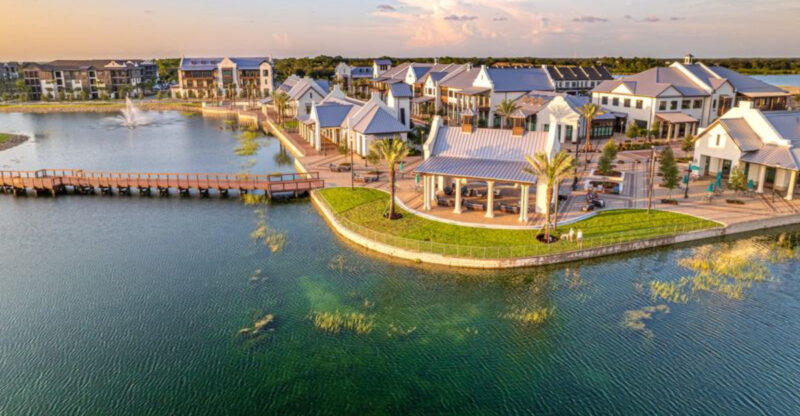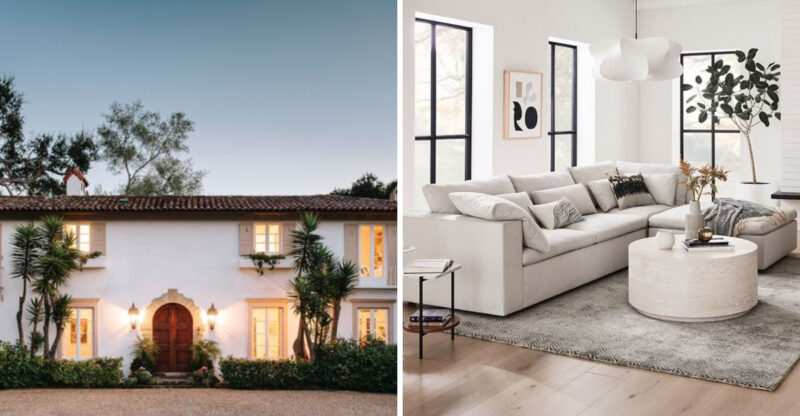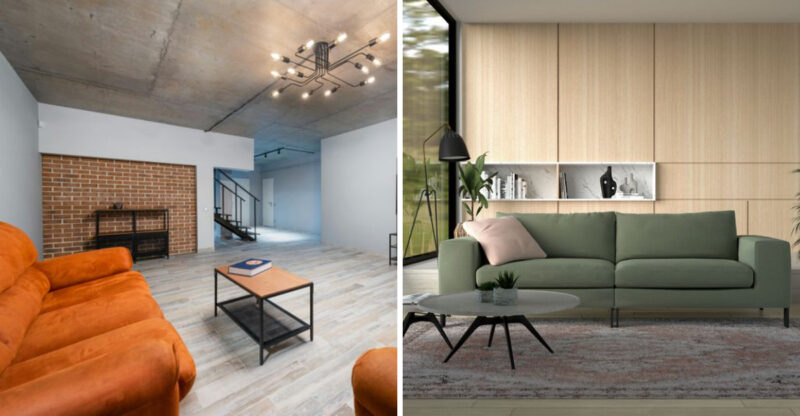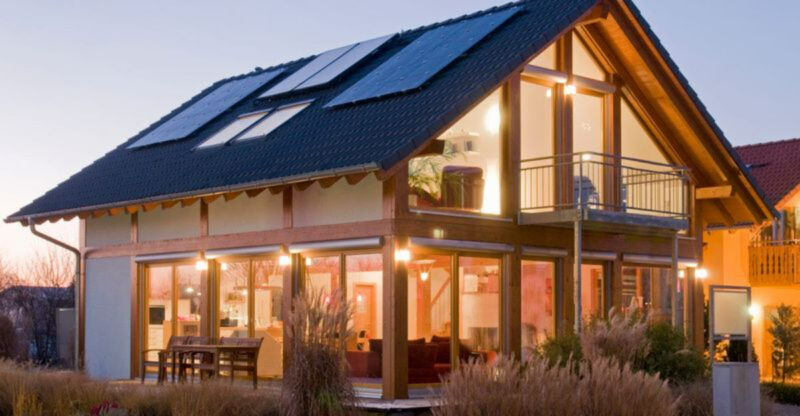These 19 “Ugly” Decor Trends Are Making A Huge Comeback In 2025
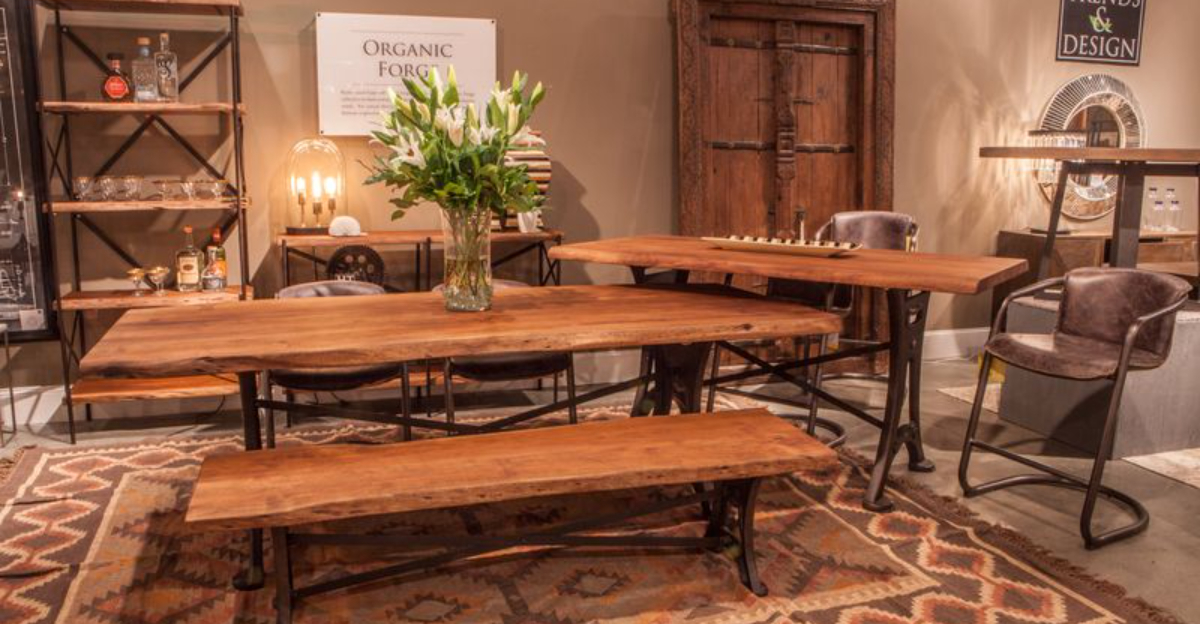
Remember those ‘hideous’ home decor trends your parents or grandparents loved? Well, guess what they’re storming back into our living spaces with surprising new appeal.
Interior designers are embracing these once-shunned styles with modern twists that make them feel fresh and exciting.
What was considered tacky yesterday is becoming tomorrow’s must-have statement piece, proving that in design, everything eventually comes full circle.
1. Over-the-top Velvet
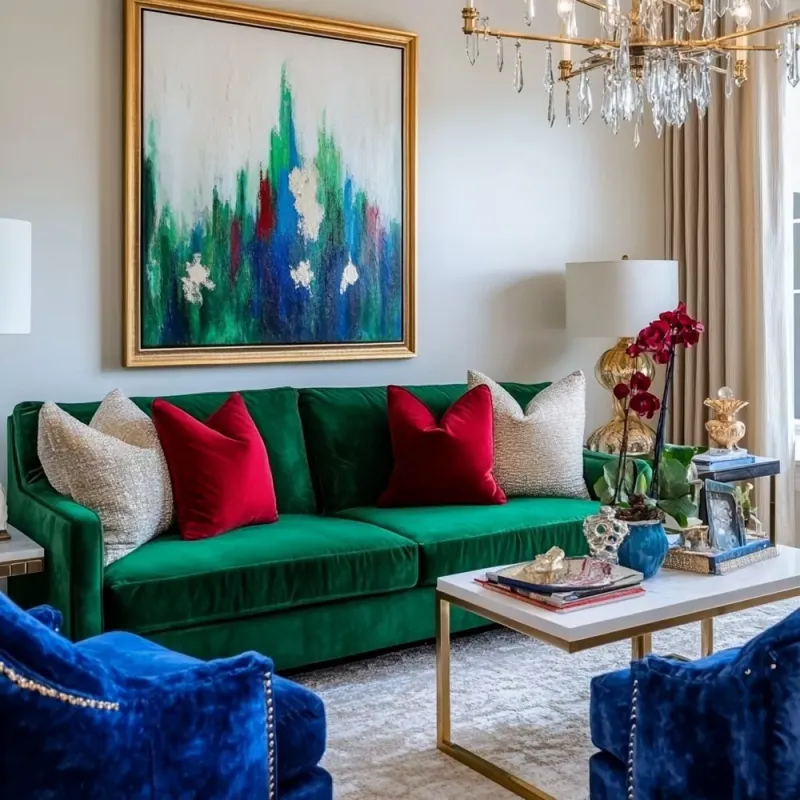
Velvet furniture was once considered stuffy and high-maintenance, but it’s roaring back with attitude in 2025. Lush velvet sofas in bold jewel tones are becoming the centerpiece in modern living rooms, offering both visual drama and tactile comfort.
Designers are pairing these plush pieces with minimalist surroundings to let the velvet take center stage. The key difference this time? Today’s velvets are more durable and stain-resistant than their predecessors.
For those not ready to commit to a full velvet sofa, accent chairs and ottomans offer smaller doses of this luxurious fabric. Even velvet throw pillows can add that touch of opulence without overwhelming your space.
2. Bold Wallpaper Patterns
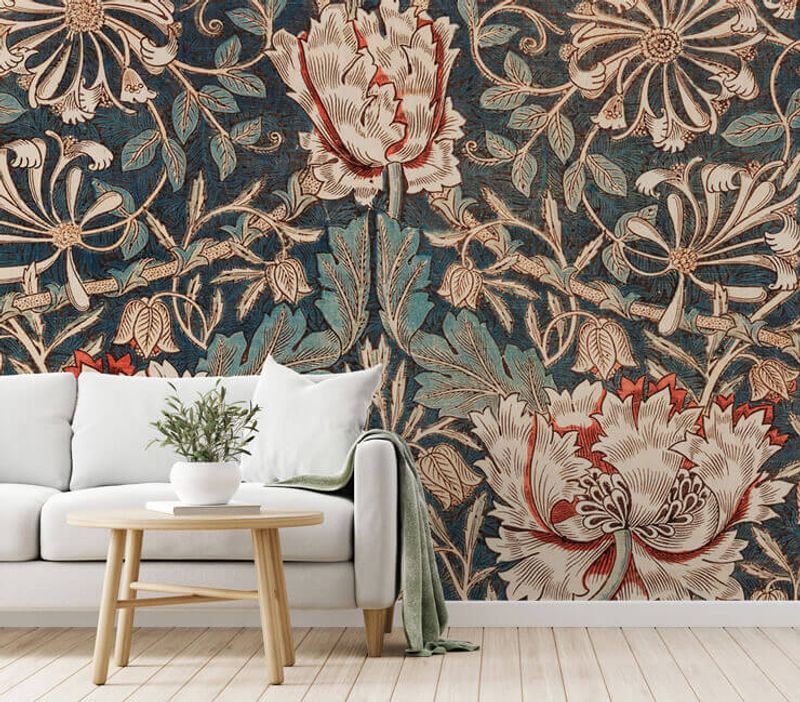
Wild wallpaper is making waves again, with patterns that would make your grandmother proud. Floral prints, geometric shapes, and even scenic murals are covering walls from floor to ceiling in trendsetting homes.
Unlike the tacky patterns of decades past, today’s wallpapers feature higher-quality prints and easier application methods. Many are even peel-and-stick for commitment-phobes! The maximalist approach is particularly popular, with patterns that tell a story or create a mood.
If you’re hesitant about wallpapering an entire room, try an accent wall behind your bed or in a powder room. These smaller spaces can handle bold patterns without overwhelming your daily life.
3. Shag Carpeting
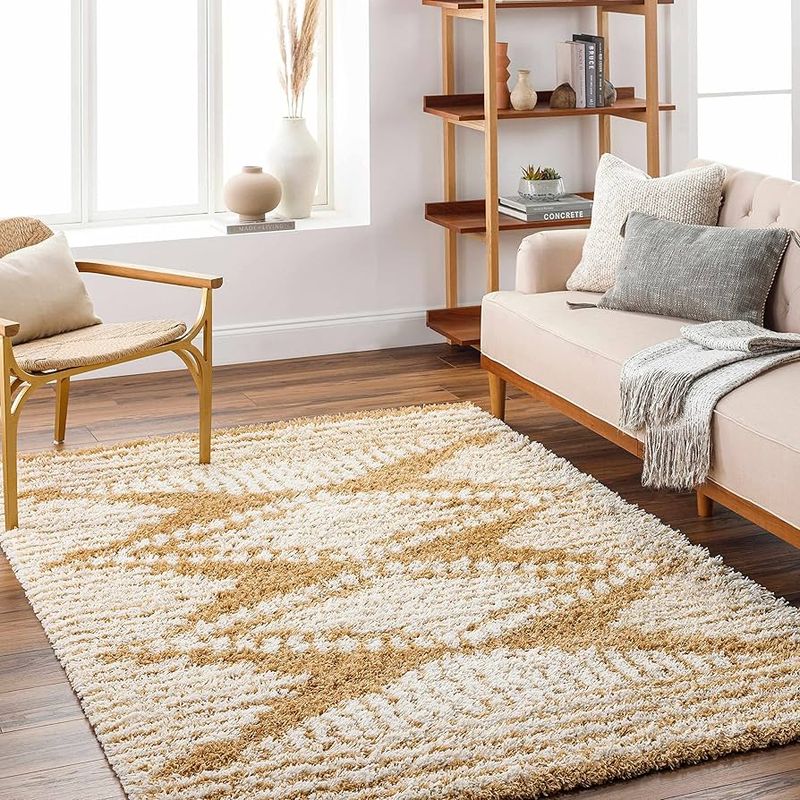
Shag carpets are no longer the dated floor coverings of 1970s basements. The new generation of shag brings softer textures, better materials, and more intentional placement into modern homes.
Today’s versions feature improved fibers that resist matting and trapping dust, addressing the practical concerns that gave shag its bad reputation. Designers are using these plush rugs in neutral tones or subtle patterns as cozy elements in otherwise sleek spaces.
Area rugs rather than wall-to-wall installation allow homeowners to enjoy shag’s comfort underfoot without committing an entire room. Many eco-conscious brands now offer sustainable options made from recycled materials or natural fibers with the same luxurious feel.
4. Earthy Terracotta
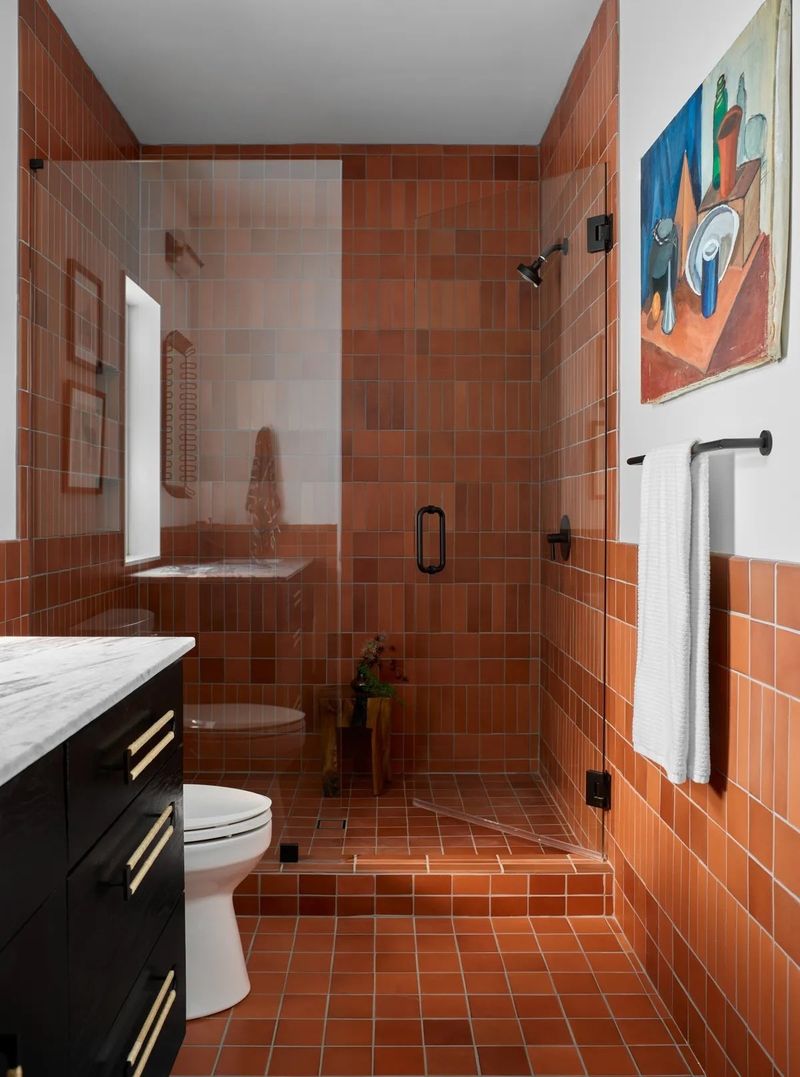
Terracotta is heating up interior spaces with its warm, natural appeal. This rusty-orange hue is appearing on everything from wall paint to decorative pottery, bringing an organic earthiness that counterbalances our tech-heavy lives.
What makes this revival different is how it’s being paired with contemporary elements rather than the Southwestern motifs of its previous heyday. Matte terracotta tiles are replacing sterile white subway tiles in bathrooms and kitchens, while terracotta-colored linens add warmth to bedrooms.
The color works surprisingly well with modern neutrals like sage green and navy blue. Even small touches—a terracotta planter here, a painted accent wall there—can bring this grounding element into your home without feeling like you’ve stepped into a time machine.
5. Exotic Animal Prints
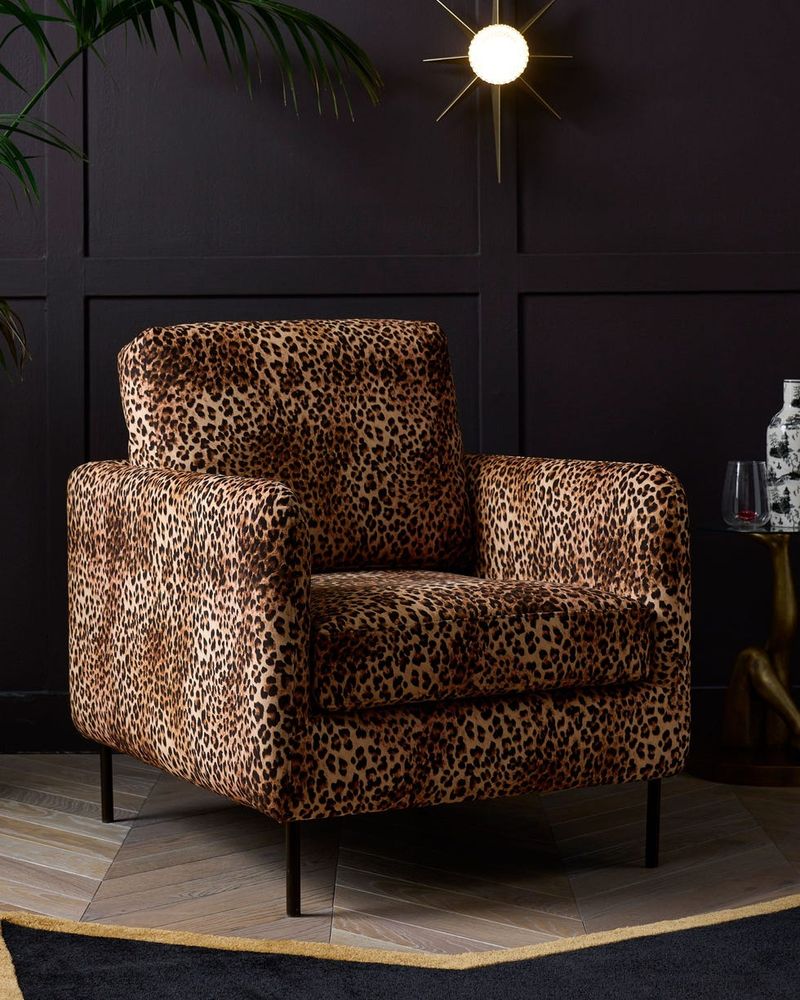
Animal prints are prowling back into our homes with newfound sophistication. Zebra, leopard, and tiger patterns are no longer considered tacky when used with restraint and paired with refined elements.
The key to this trend’s resurrection is balance. A leopard print chair becomes a statement piece when surrounded by solid colors and clean lines. Designers are also experimenting with abstract interpretations of these patterns, making them feel fresh rather than dated.
For those wanting to test the waters, throw pillows or a small area rug offer low-commitment options. The most forward-thinking decorators are mixing different animal prints together—something that would have been considered a major faux pas in previous decades but now reads as confidently eclectic.
6. Clashing Color Palettes
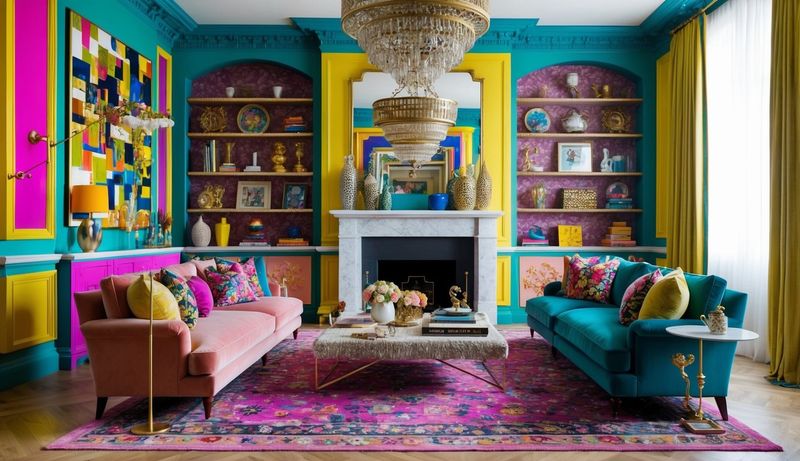
Color combinations that once made designers cringe are now being celebrated for their vibrant energy. Think purple with orange, teal with mustard yellow, or pink with red—pairings that deliberately challenge conventional color harmony.
This trend rejects the safe, neutral palettes that dominated the 2010s in favor of expressive, personality-filled spaces. The difference now is in the execution—these clashing colors are being introduced with intention, often against neutral backgrounds that help them pop without overwhelming.
Many homeowners are starting small with colorful accessories that can be swapped out if the look becomes tiresome. Others are going all-in with painted furniture pieces in contrasting hues or boldly colored kitchen cabinets paired with unexpected backsplashes. The result is spaces that feel lively, personal, and anything but boring.
7. Wicker Furniture
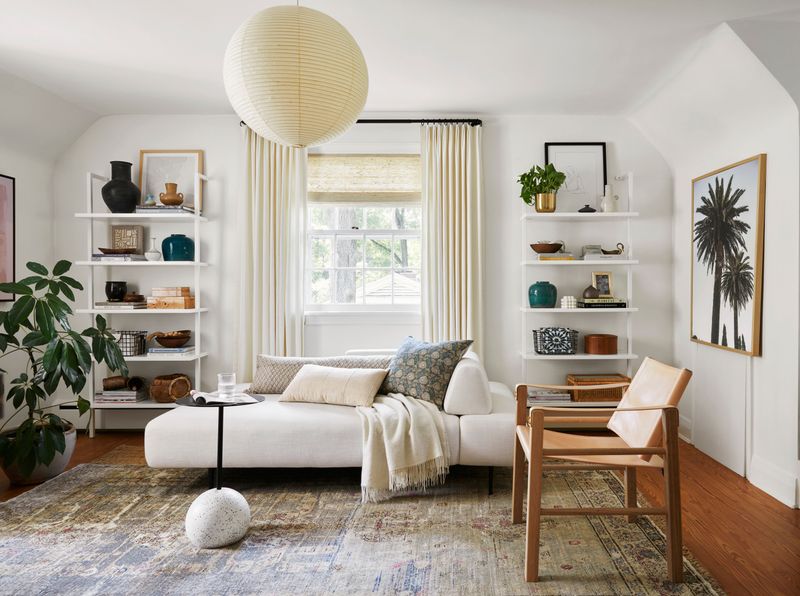
Wicker furniture has shaken off its reputation as outdated porch decor and moved inside with style. The natural texture and organic shapes of wicker and rattan pieces add warmth to minimalist interiors that might otherwise feel cold.
Modern wicker designs feature cleaner lines and are often painted in contemporary colors rather than left in their natural state. Designers are incorporating wicker headboards, pendant lights, and accent chairs alongside sleeker furniture for textural contrast.
Durability has improved significantly, addressing one of the main complaints about vintage wicker. Many pieces now combine wicker elements with metal frames for stability, while maintaining that breezy, natural aesthetic. This blend of nostalgia and modern sensibility makes wicker’s comeback feel fresh rather than simply recycled.
8. Deep Jewel Tones
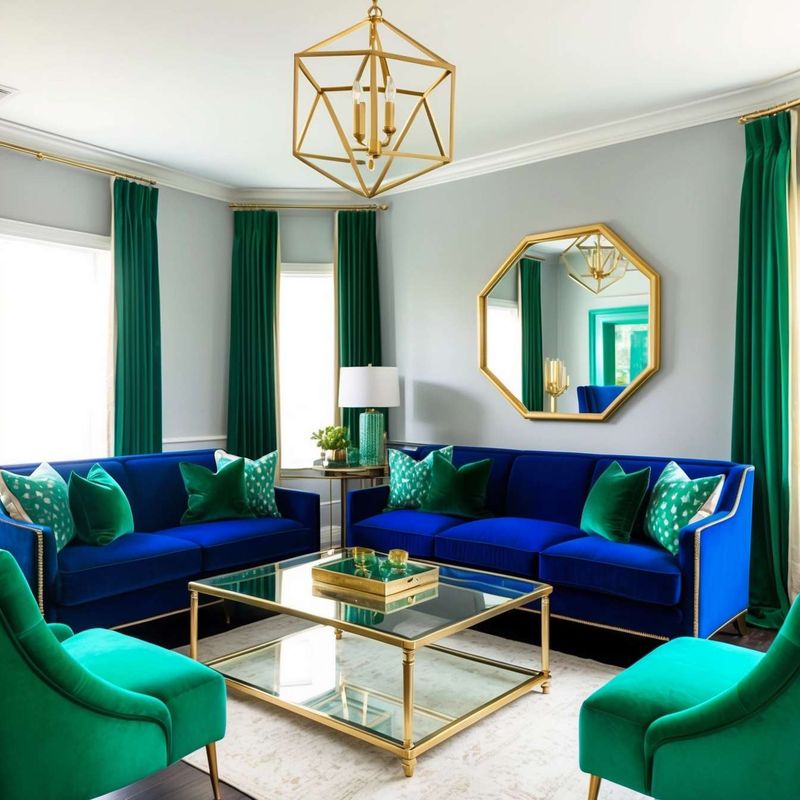
Sapphire blues, emerald greens, and ruby reds are dethroning the ubiquitous grays and beiges of recent years. These rich jewel tones bring depth and luxury to spaces that had become predictably neutral.
Unlike the dark, heavy rooms of the 1990s, today’s approach pairs these bold colors with plenty of natural light and reflective surfaces. Velvet upholstery in jewel tones is particularly popular, creating a sense of opulence without feeling stuffy.
Many homeowners are embracing these colors on walls, creating dramatic backdrops for artwork and furniture. Others are introducing jewel tones through accessories like pillows, throws, and artwork. The contrast between these deep, saturated colors and lighter elements creates dynamic spaces that feel both timeless and fresh.
9. Ruffled Curtains
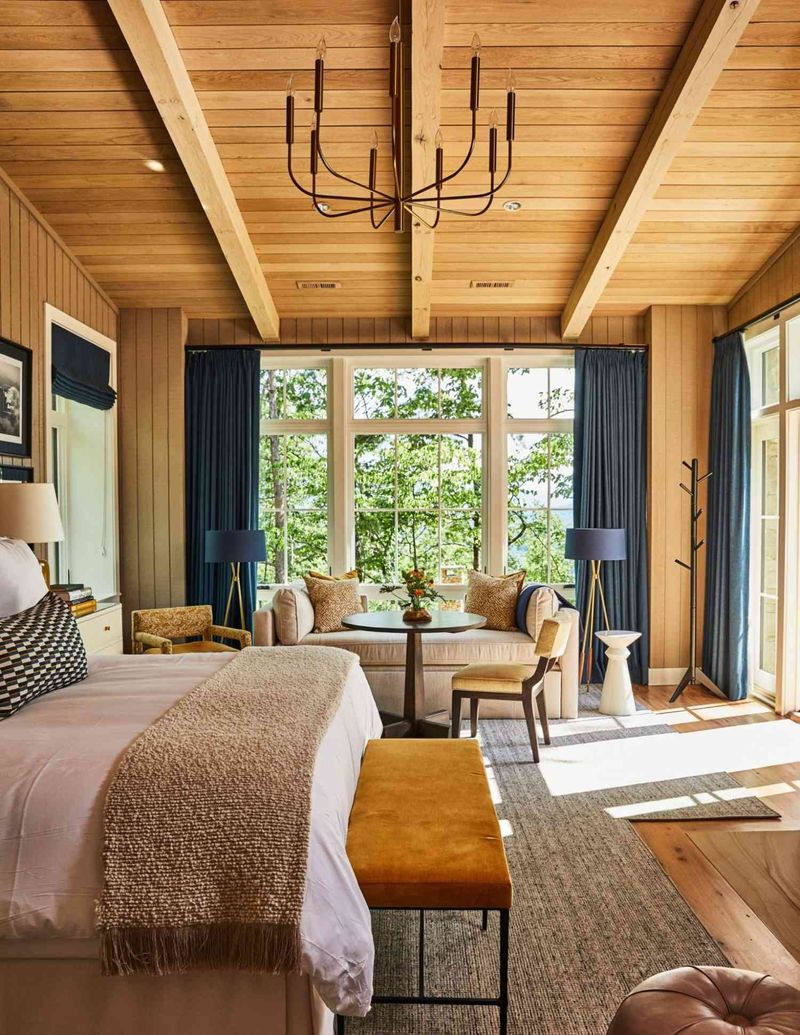
Ruffled curtains are shedding their frilly, outdated image and returning with more refined silhouettes. The modern interpretation features subtle gathering rather than excessive frills, creating texture without the fussiness.
Designers are choosing higher-quality fabrics like linen and cotton blends that hold shape beautifully without looking cheap. These updated ruffled curtains work particularly well in rooms that blend vintage and contemporary elements, adding softness to spaces with hard architectural lines.
White and cream remain popular color choices, but muted pastels and even bold solid colors are making appearances. The key is simplicity in other elements when the curtains feature ruffles, the rest of the room’s textiles typically stay more streamlined to avoid that overwhelming “grandma’s house” feeling.
10. Cerulean Blue Accents
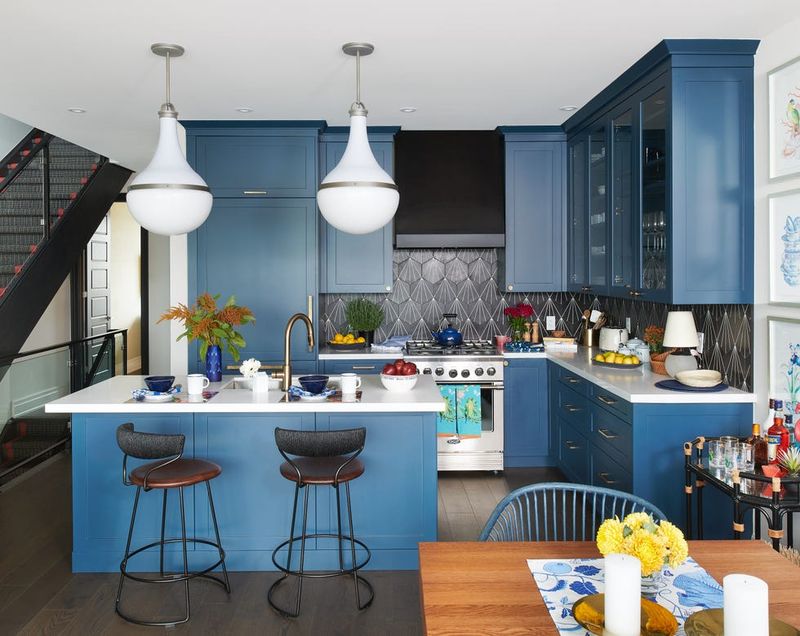
Cerulean blue—that vibrant sky-meets-ocean shade—is popping up everywhere from kitchen cabinets to statement furniture. This specific blue tone was considered dated after its popularity in the late 1990s, but it’s returned with a sophisticated edge.
Today’s approach pairs cerulean with unexpected colors like terracotta, mustard, or sage green instead of the predictable white. The hue works beautifully as an accent wall or on kitchen islands where it adds personality without overwhelming the space.
Accessories in this vibrant blue offer an easy entry point think ceramic vases, throw pillows, or artwork. What makes this revival work is the balance cerulean blue becomes a purposeful accent rather than the overwhelming presence it once was in homes at the turn of the millennium.
11. Retro Geometric Rugs
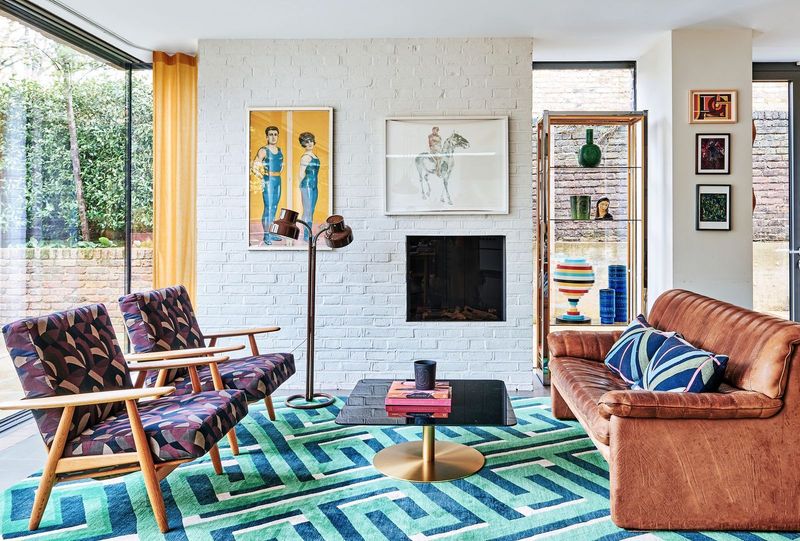
Geometric rugs with bold patterns and bright colors are making a triumphant return from the 1960s and 70s. These statement floor coverings feature striking shapes, zigzags, and abstract designs that add instant personality to any room.
Unlike their vintage predecessors, today’s geometric rugs often incorporate contemporary color palettes that feel fresh rather than dated. Many designers are placing these eye-catching rugs in otherwise minimal spaces, letting them serve as the room’s artistic focal point.
The revival works because these rugs are being used more intentionally—as curated design elements rather than standard floor coverings. High-quality materials and improved manufacturing techniques also mean better durability and easier maintenance than the originals, addressing practical concerns while maintaining that playful retro vibe.
12. Brassy Metallics
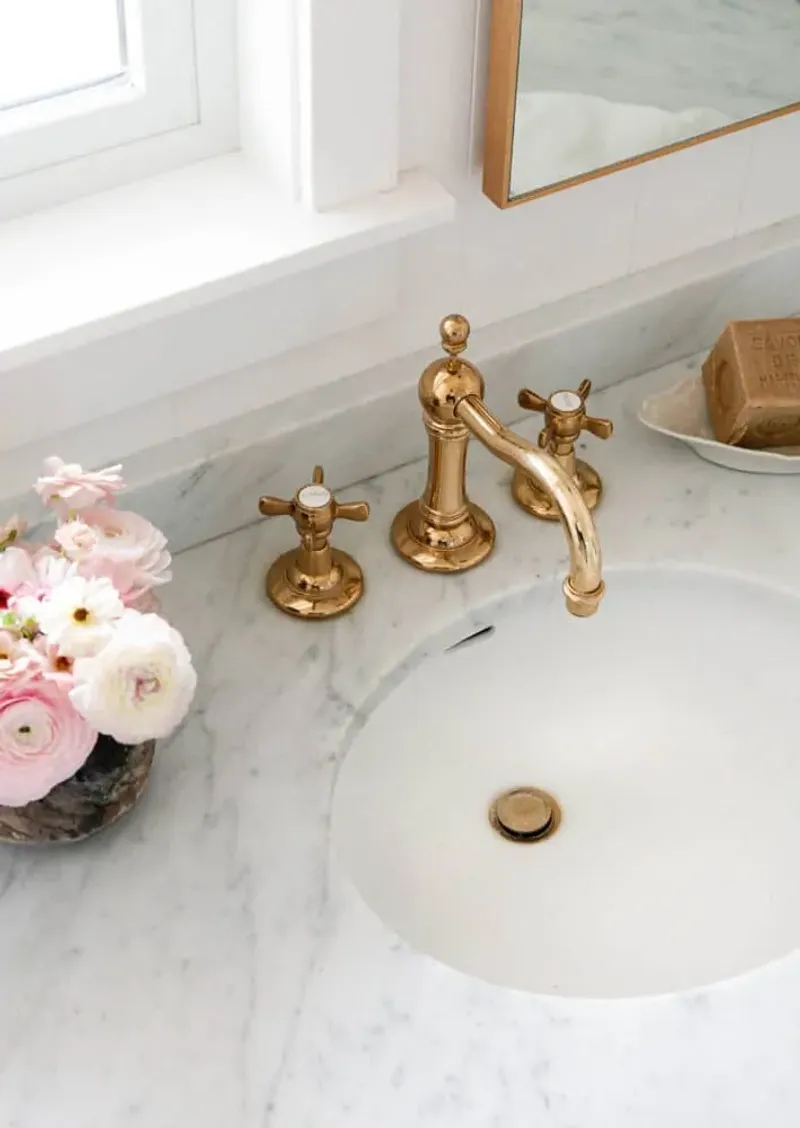
Brass is back, but not the shiny lacquered fixtures of the 1980s. Today’s brass trend features warm, unpolished finishes that develop character over time. These unlacquered or antique brass elements add warmth that chrome and stainless steel simply can’t match.
Kitchens and bathrooms are leading this metallic revival with brass faucets, cabinet hardware, and lighting fixtures. The key difference in this comeback is how brass is being mixed with other metals rather than used exclusively throughout a space.
Many homeowners are introducing brass through smaller accessories like picture frames, candlesticks, and decorative objects. This approach allows for experimentation without the commitment of permanent fixtures. The result is spaces that feel layered and collected rather than matched and perfect.
13. Macramé Wall Hangings
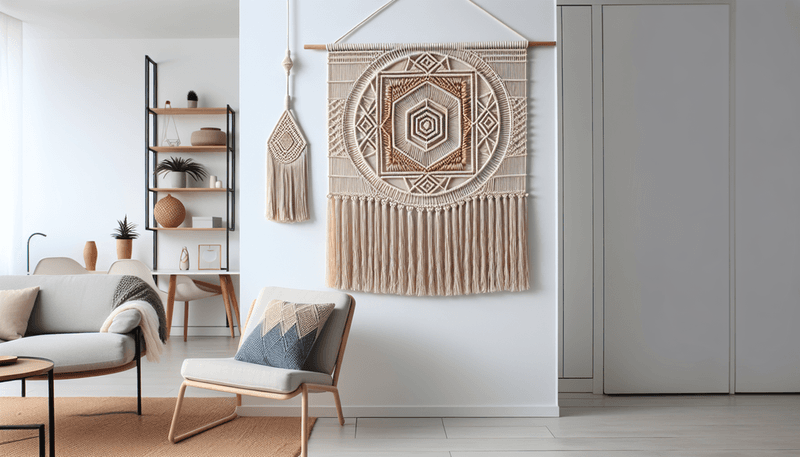
Macramé has evolved from its hippie-dippy reputation into a sophisticated art form that adds texture and handcrafted charm to contemporary spaces. These knotted creations now feature more refined patterns and are often made with higher-quality materials than their 1970s counterparts.
Modern macramé works particularly well against minimalist backdrops, where its intricate textures can truly shine. Many artists are creating oversized pieces that serve as dramatic focal points above beds or sofas.
The neutral color palette of natural fibers remains popular, but some designers are experimenting with dyed threads in subtle ombré effects or muted colors. What makes this revival successful is the balance macramé is now used as a thoughtful accent rather than a room-dominating theme, allowing its artisanal quality to enhance rather than overwhelm contemporary interiors.
14. Chunky Wood Furniture
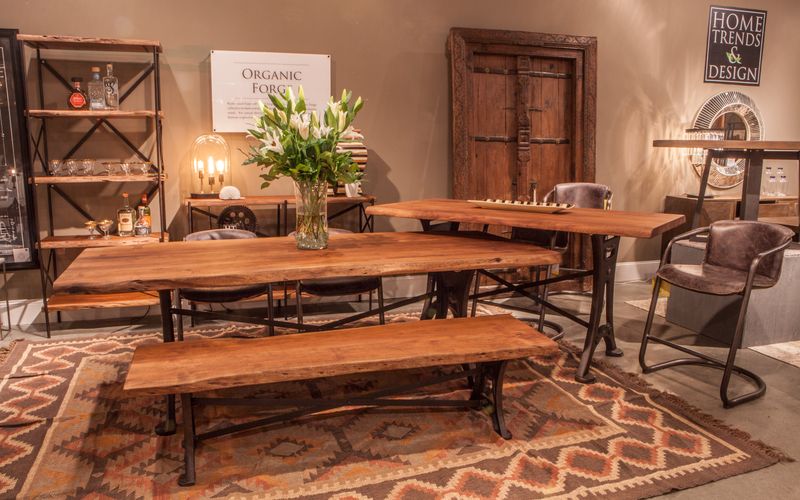
Heavy wooden furniture pieces that were once dismissed as clunky and outdated are making a powerful comeback. These substantial pieces with thick proportions and visible grain bring warmth and grounding energy to spaces that have become too sleek and sterile.
Unlike the dark, matching furniture sets of decades past, today’s chunky wood pieces are often mixed with lighter elements and different wood tones. Live-edge tables, substantial wooden headboards, and robust consoles add character to rooms without feeling overwhelming.
Sustainability is driving much of this trend, with reclaimed and responsibly sourced woods taking center stage. Many homeowners appreciate the timeless quality of well-made wooden furniture that will last for generations, contrasting with the disposable nature of many contemporary pieces.
15. Painted Brick Walls
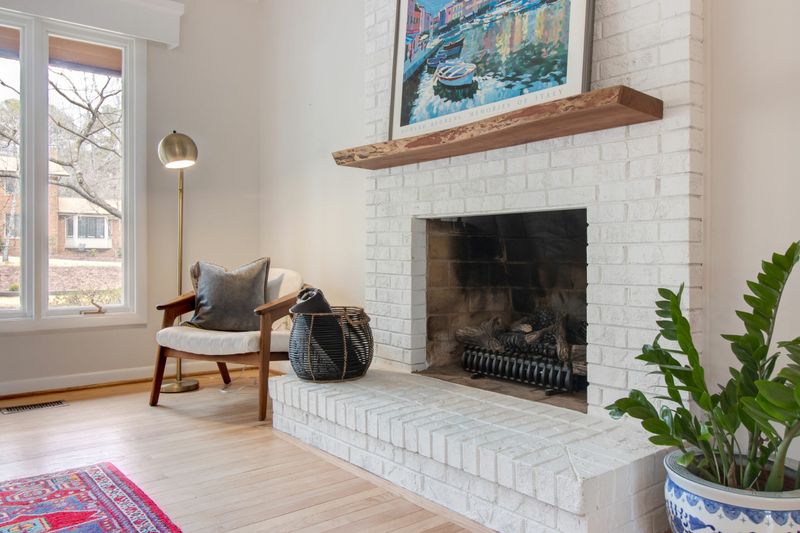
Painted brick is challenging the “exposed brick at all costs” mentality that dominated the early 2000s. Homeowners are covering those once-prized raw brick walls with paint in both bold and neutral shades, creating cleaner backdrops that still maintain texture.
White remains popular for its brightness and versatility, but moody blues, greens, and even black are making statements in design-forward homes. The paint softens the industrial feel of brick while preserving its dimensional quality and architectural interest.
Limewashing rather than solid painting has become a popular middle ground, allowing some of the brick’s natural variation to show through a translucent layer of color. This technique creates depth and character that flat painted walls simply can’t match, while still providing a fresher, more contemporary look than raw brick.
16. Vintage Ceramic Lamps

Quirky ceramic lamps from the 1960s and 70s are lighting up contemporary spaces with their sculptural forms and personality. These statement pieces—often featuring organic shapes, textured glazes, or unusual proportions—add character that mass-produced lighting lacks.
Designers are pairing these vintage finds with contemporary shades in clean lines to update their look. The contrast between an artisanal ceramic base and a crisp modern shade creates a perfect balance of old and new.
Colors range from earthy neutrals to vibrant glazes, with many lamps becoming the unexpected focal point of a room. What makes this trend work is curation—these distinctive lamps are chosen for their artistic merit and used as standalone statement pieces rather than matched pairs, giving rooms a collected-over-time feeling that perfectly counters the catalog-perfect aesthetic that dominated recent decades.
17. Beaded Chandeliers
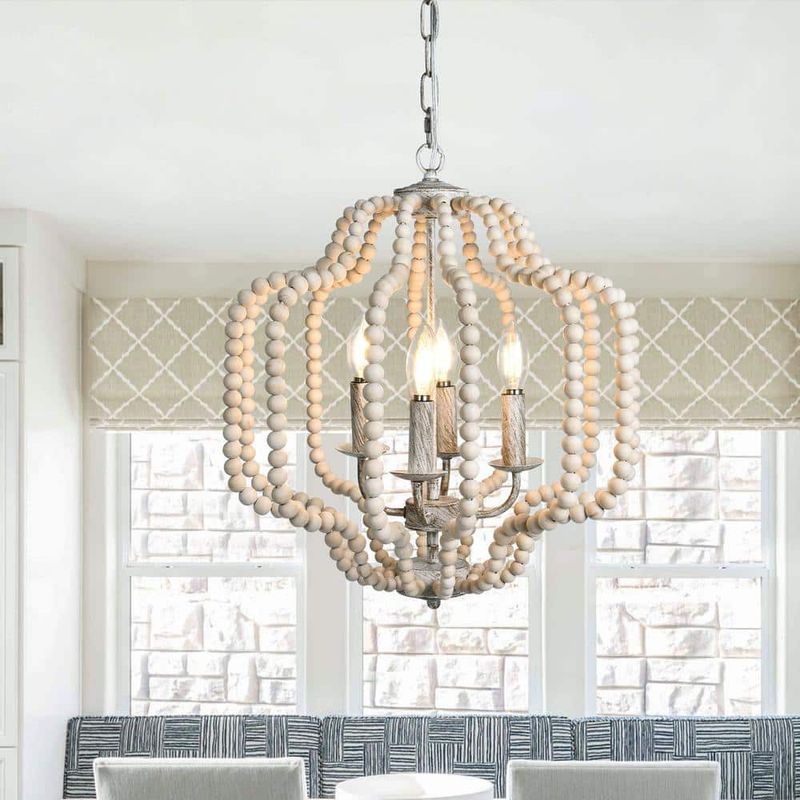
Beaded chandeliers are shedding their bohemian image and hanging in unexpected places throughout the home. These textural light fixtures add movement and visual interest with their cascading elements and the beautiful shadows they cast.
Unlike the strictly boho versions popular in the 2010s, today’s beaded chandeliers incorporate diverse materials like wood, glass, ceramic, and even recycled materials. Many feature more structured designs with cleaner lines that work well in contemporary settings.
Designers are installing these statement pieces in unexpected locations over bathtubs, in hallways, or even in walk-in closets rather than limiting them to dining rooms. The contrast between these organic, handcrafted fixtures and more streamlined surroundings creates tension that makes spaces feel thoughtfully designed rather than rigidly matched.
18. Patterned Enamelware
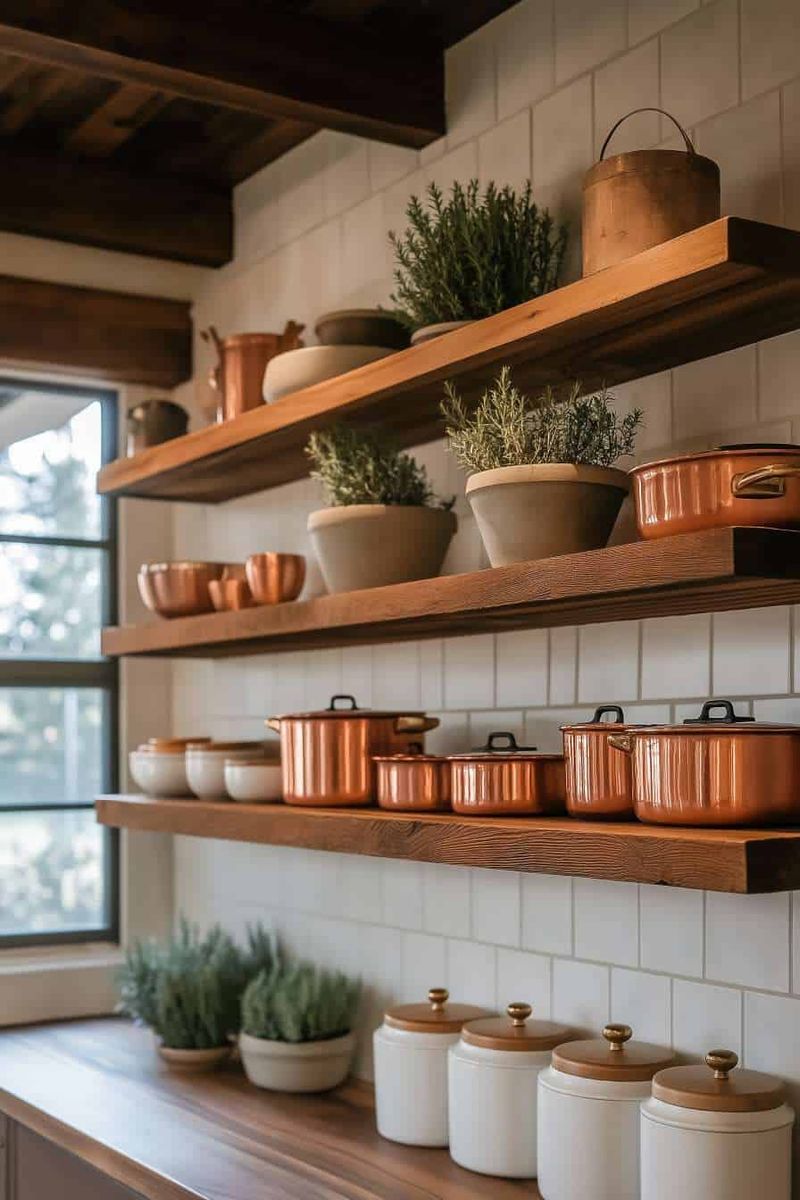
Colorful enamel kitchenware is stepping out of vintage cupboards and into stylish modern kitchens. These durable pieces with their distinctive speckled or solid bright finishes are both functional and decorative, adding personality to culinary spaces.
Unlike the purely utilitarian approach of the past, today’s trend celebrates enamelware as display-worthy decor. Open shelving showcases collections of enamel mugs, bowls, and cooking pots in coordinating colors or intentional contrasts.
Many homeowners are drawn to both vintage pieces with their authentic patina and new enamelware that offers improved durability with the same nostalgic appeal. The handcrafted quality and imperfections of enamelware provide welcome relief from the perfection of stainless steel and glass that dominated kitchens for years, bringing warmth and character back to the heart of the home.
19. Faux Fur Throws
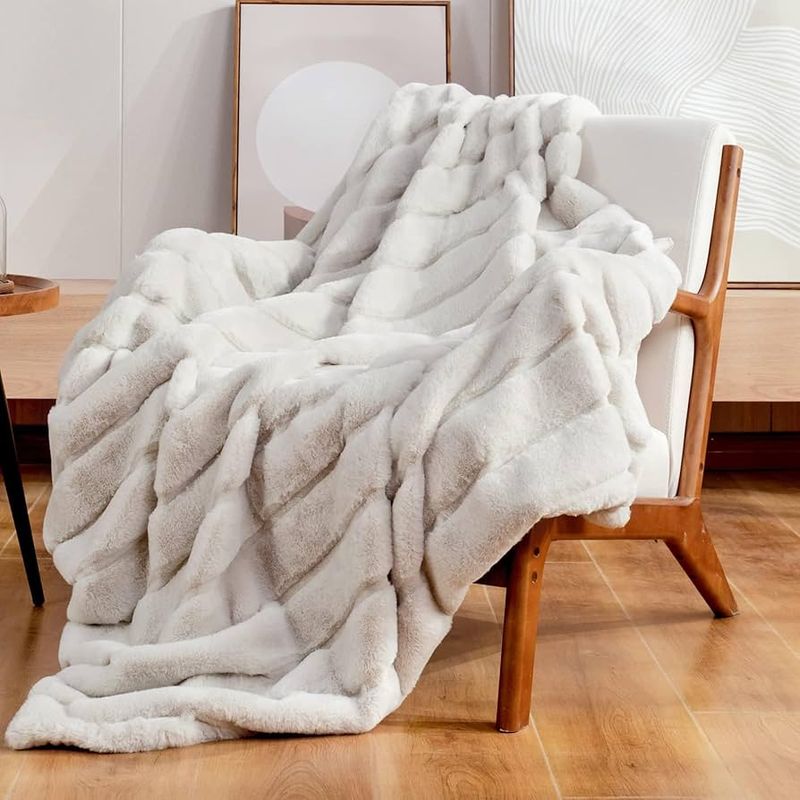
Faux fur throws and pillows are making homes cozy again after years of thin, minimalist textiles. These plush accessories add instant warmth, texture, and luxury to spaces that might otherwise feel stark or impersonal.
Today’s faux furs feature improved technology that makes them incredibly soft and realistic without harming animals. Many designers are using these textural elements to contrast with sleeker furniture, creating layers of visual and tactile interest.
Colors range from natural-looking neutrals to fantasy hues like pink or blue that clearly celebrate their artificial nature. What makes this trend’s comeback successful is restraint—using faux fur as an accent rather than covering every surface. A single throw draped over a sofa or a pair of pillows on a bed adds just enough luxury without veering into tacky territory.

